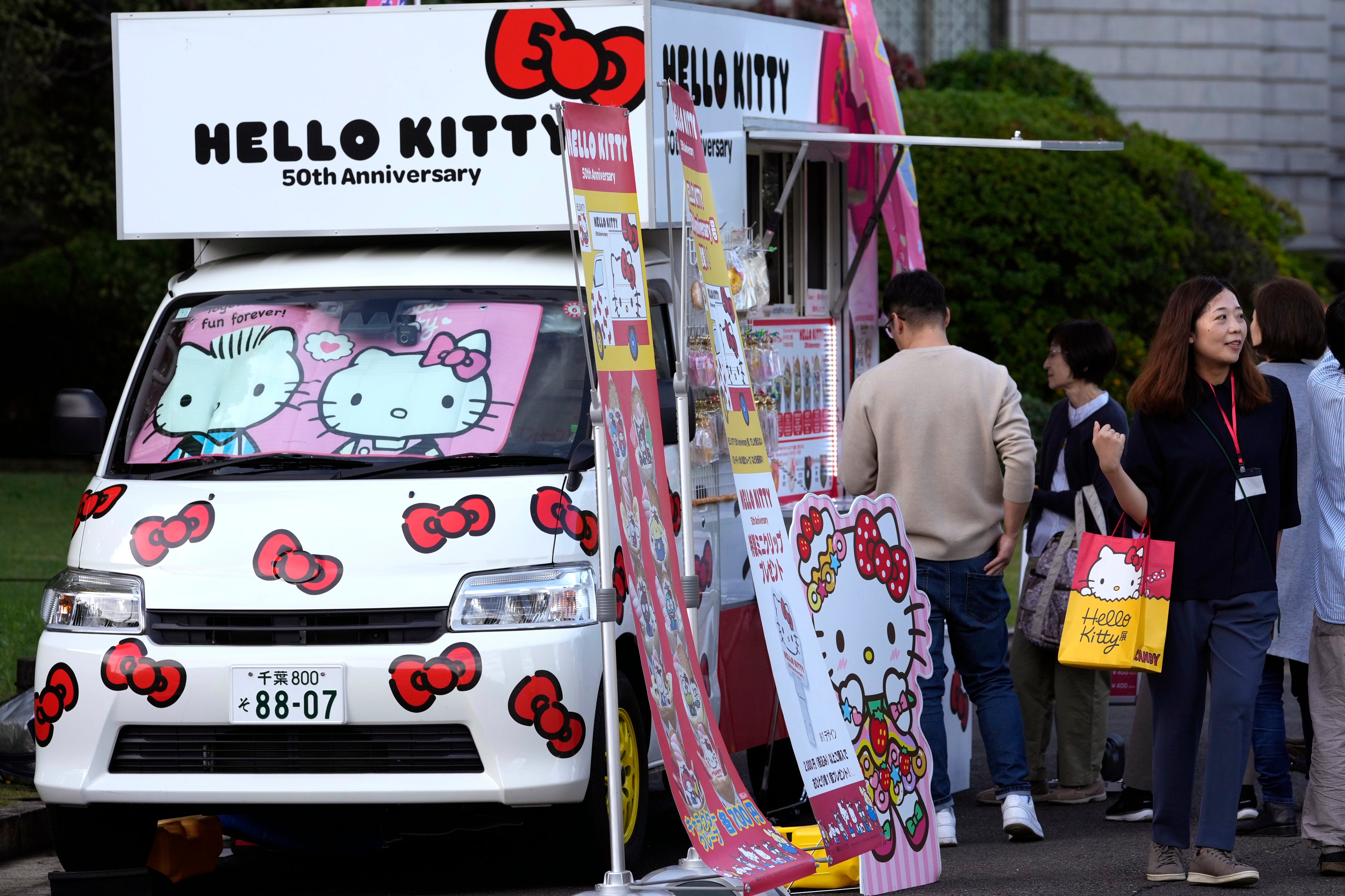Hello Kitty turns 50 on Friday. Befitting a pop icon at midlife, the bubble-headed, bow-wearing character’s fictional birthday has brought museum exhibits, a theme park spectacle and a national tour. And that’s just in Japan, her literal birthplace but not the one listed in her official biography.
Confused? Welcome to the party. If there’s one thing about Hello Kitty, it’s that she’s proven adaptable and as much a study in contrasts during her long career. She — and Kitty is a she, according to the company that owns her — may have been conceived as a vessel for the feelings of others, but some women see an empowering symbol in her mouthless face.
“Shrewd” is how Mika Nishimura, a design professor at Tokyo’s Meisei University, describes the way Hello Kitty conquered the worlds of commerce, fashion and entertainment. As a tabula rasa open to interpretation, the non-threatening creation was the perfect vehicle for making money, she said.
“American feminists have said she doesn’t say anything and acquiesces to everyone. But in Japan, we also see how she may appear happy if you’re happy, and sad if you’re feeling sad,” Nishimura told The Associated Press. “It’s a product strategy that’s sheer genius. By being so adaptable, Kitty gets all those collaborative deals.”

The character’s semicentennial is evidence of that. Sanrio, the Japanese entertainment company that holds the rights to Hello Kitty’s name and image, kicked off the festivities a year ago with an animation account on TikTok, Roblox games and an avatar for the social networking app Zepeto.
There have been anniversary editions of merchandise ranging from pet collars, cosmetics and McDonald’s Happy Meals to Crocs and a Baccarat crystal figurine. A gold coin pendant with the image of Hello Kitty holding the number 50 is selling for about 120,000 yen ($800), while a Casio watch costs 18,700 yen ($120).
But first, more on the origin story.
Unlike Mickey Mouse and Snoopy, Hello Kitty didn’t start as a cartoon. A young Sanrio illustrator named Yuko Shimizu drew her in 1974 as a decoration for stationery, tote bags, cups and other small accessories. The design made its…
Click Here to Read the Full Original Article at The Independent Travel…
